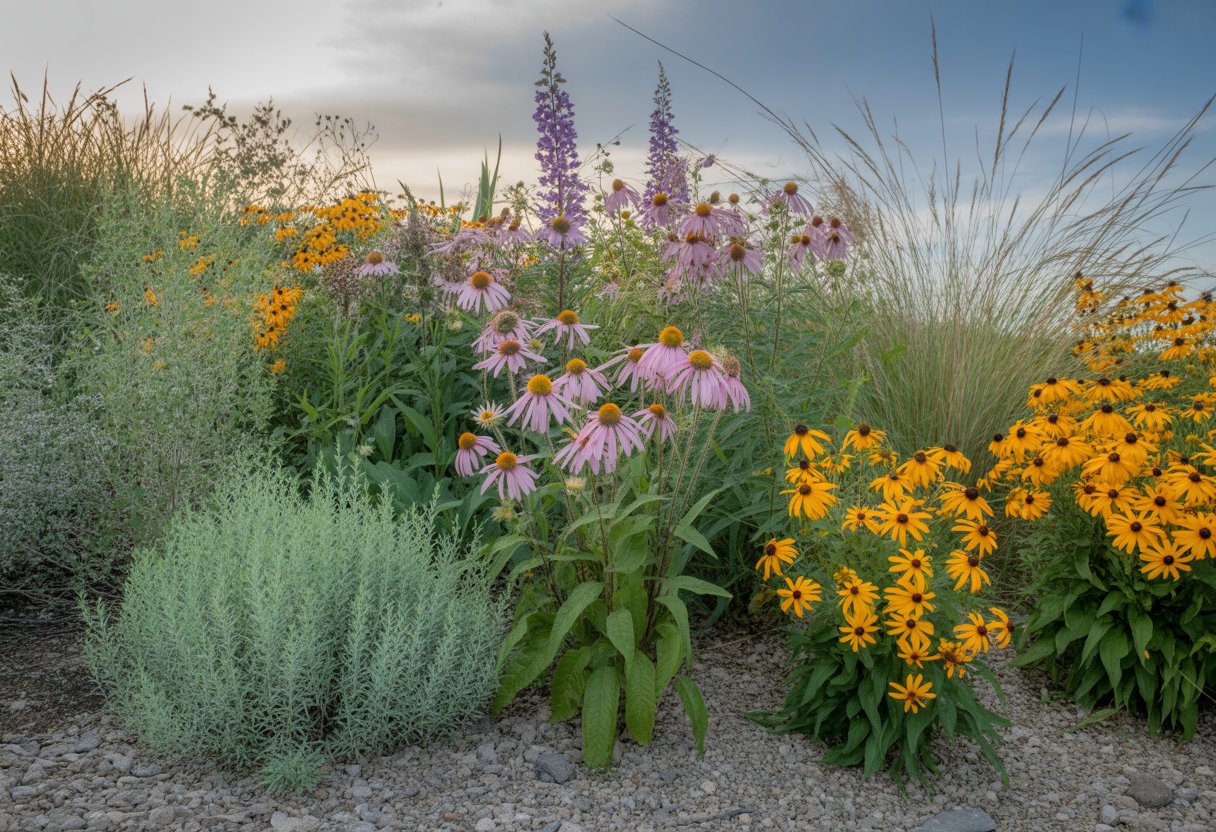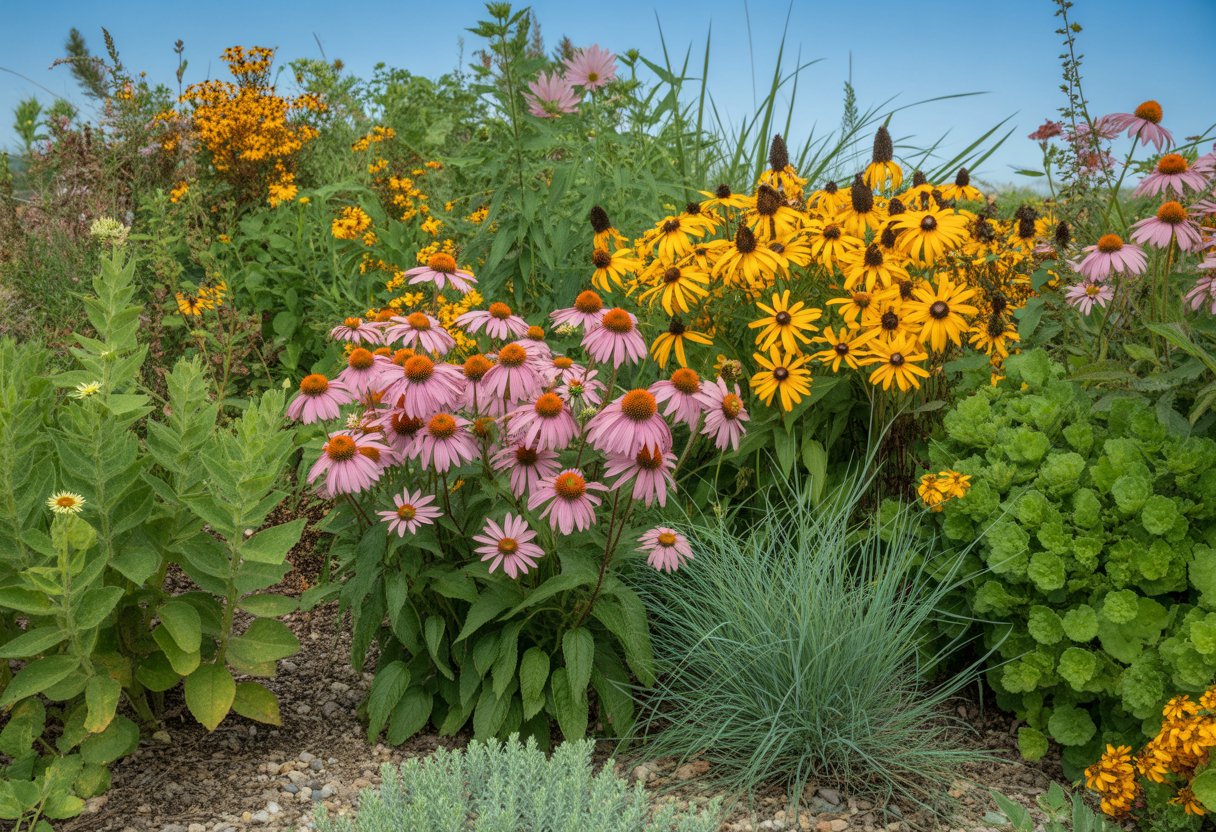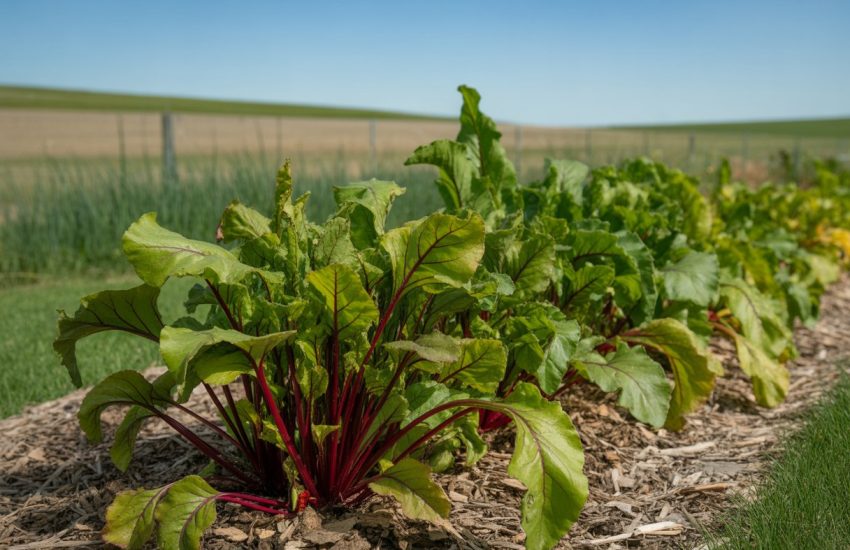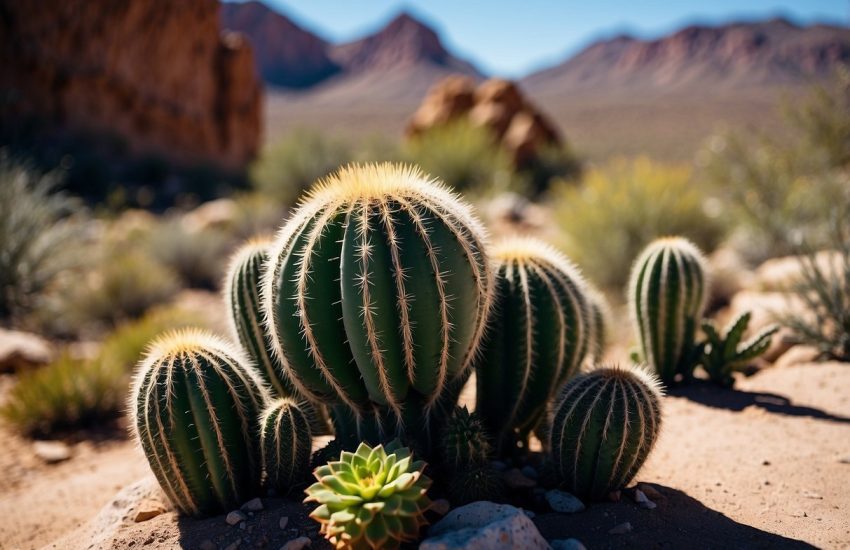Drought Tolerant Native Plants Pennsylvania for Sustainable Landscaping and Water Conservation
Pennsylvania goes through dry spells that really test gardeners and landscapers. Finding plants that can handle less water isn’t always easy, but drought tolerant native plants offer a practical answer. They’re already used to the region’s climate and soil, which makes things a lot simpler.

Once these native plants get established, they barely need any irrigation. That’s a win for sustainable landscaping in Pennsylvania, and they’re great for local ecosystems too.
Picking the right drought-resistant natives means your garden can bounce back from tough weather. Knowing which plants actually do well here helps everyone from backyard gardeners to pros make better choices.
Understanding Drought Tolerant Native Plants in Pennsylvania
Drought tolerant native plants in Pennsylvania come with built-in strategies for surviving dry spells. They bring a bunch of ecological perks to the table and make landscaping less of a hassle.
These plants help wildlife and keep gardens looking good with less work.
Adaptations to Dry Conditions
Plants from eastern North America have evolved deep root systems to reach water far underground. That’s a big deal for Pennsylvania’s often well-drained soils.
A lot of these species have small or waxy leaves to slow down water loss. Some even have hairy leaves that cut evaporation.
You’ll find switchgrass, butterflyweed, and little bluestem using these tricks. Their biology just fits right in for restoration and gardens that don’t get a lot of rain.
Benefits for Landscaping and Wildlife
Landscaping with drought tolerant natives means you can skip a lot of watering and soil fixes. They just do their thing in Pennsylvania dirt, so you spend less time fussing over them.
Bees and butterflies love these plants. Eastern purple coneflower and milkweed are pollinator magnets, which is awesome for local biodiversity.
They also restore habitats and boost green spaces. Local wildlife gets food and shelter, which helps urban and suburban areas stay a little wilder.
Key Environmental Considerations
Soil drainage matters a lot for drought tolerant species in Pennsylvania. These plants need well-drained ground to avoid root rot and other soggy problems.
It’s smart to avoid overwatering and skip heavy fertilizers. Native plants already know how to handle low-nutrient soils.
Some years are drier than others, so you might have to water during long dry stretches. Keeping an eye on soil moisture goes a long way.
Types of Drought Tolerant Native Plants for Pennsylvania Gardens

Plenty of native Pennsylvania plants are tough enough for dry weather. Shrubs, small trees, grasses, and ferns all have options that barely need watering once they settle in.
Shrubs and Small Trees
Oak leaf hydrangea and witch hazel are two shrubs that handle dry spells and give gardens some backbone. Butterfly weed, a wildflower that acts like a shrub, draws pollinators and doesn’t need much water.
Native small trees like serviceberry and redbud do well in dry soils once they’re established. They bring flowers, berries, and cool foliage to the mix.
Most drought-tolerant shrubs have deep roots, which helps them ride out Pennsylvania’s shifting weather. They also attract wildlife and add texture, which I think makes gardens way more interesting.
Grasses and Ferns
Pennsylvania sedge and muhly grass are native grasses that shrug off drought. Muhly grass, in particular, has those wispy seed heads and loves well-drained soil.
Christmas fern stands out among ferns for its drought tolerance. It works in shaded, dry woodland gardens and needs less water than you’d expect from a fern.
Grasses and ferns both help with biodiversity and keep soil in place. Once they’ve settled in, they need barely any extra water, which feels like a relief in Pennsylvania summers.
Designing a Low Maintenance Pollinator Garden
Building a pollinator garden in Pennsylvania means picking plants carefully and thinking about where to put them. You want drought tolerance, but you also want to make pollinators happy with plants that fit the local climate.
Choosing Plant Species for Pollinators
Go for plants that pull in all kinds of pollinators. Butterfly weed (Asclepias tuberosa) is a native that’s tough and loved by butterflies and bees.
Mix in flowering plants that bloom at different times, so there’s always food around. Stick with natives that like well-drained soils, and skip anything that needs tons of water or fertilizer.
Incorporating Native Wildflowers and Grasses
Wildflowers like black-eyed Susan and coneflower give pollinators nectar and pollen with almost no fuss. Pair them with native grasses like little bluestem for structure and extra habitat.
These wildflowers and grasses don’t need rich soil—just the opposite, really. Their deep roots help hold onto moisture when it’s dry, which means less watering for you and a tougher garden overall.
Landscaping Around Driveways and Dry Areas
Driveways and dry, sunny spots actually work great for drought-tolerant native plants. Butterfly weed and native grasses, for example, thrive in these well-drained, sometimes rough soil conditions.
You’ll end up cutting down on lawn work and there’s less runoff to worry about. Plus, native plants in these areas help bring back bits of natural habitat and you won’t have to water as much.
If the soil feels way too compacted, try mixing in some organic matter. Still, it’s usually smarter to stick with plants that already love dry, low-nutrient spots—they just do better there.


